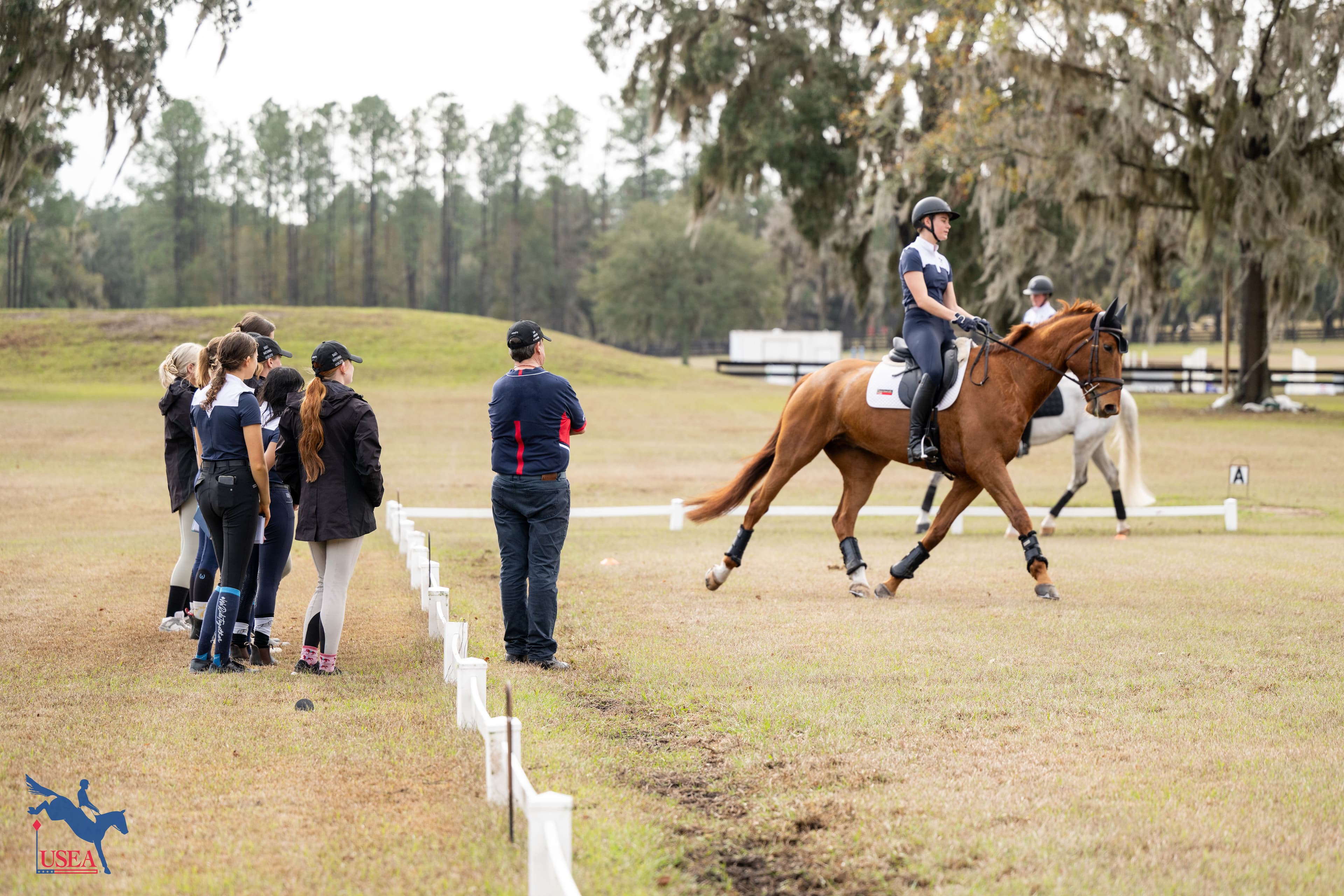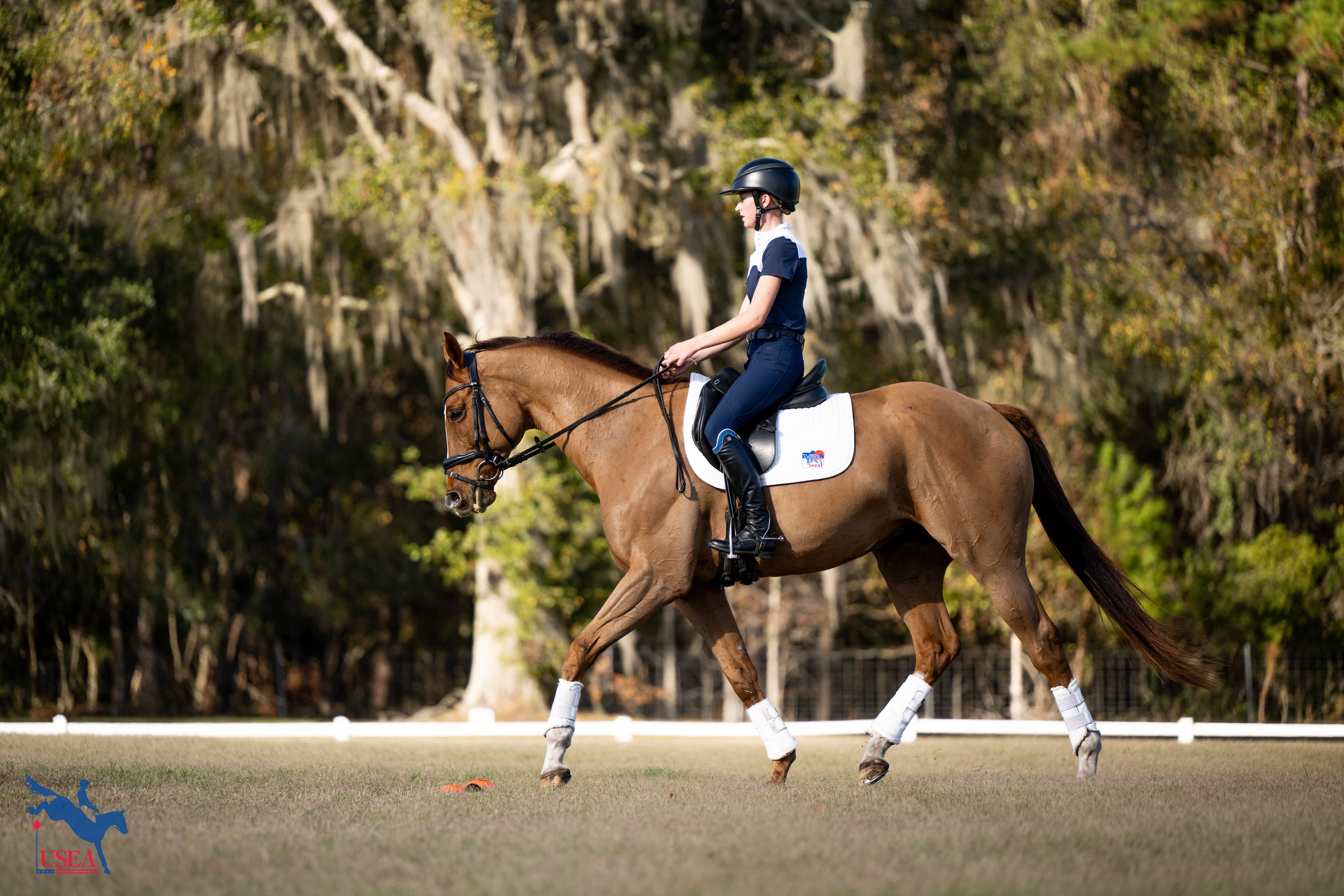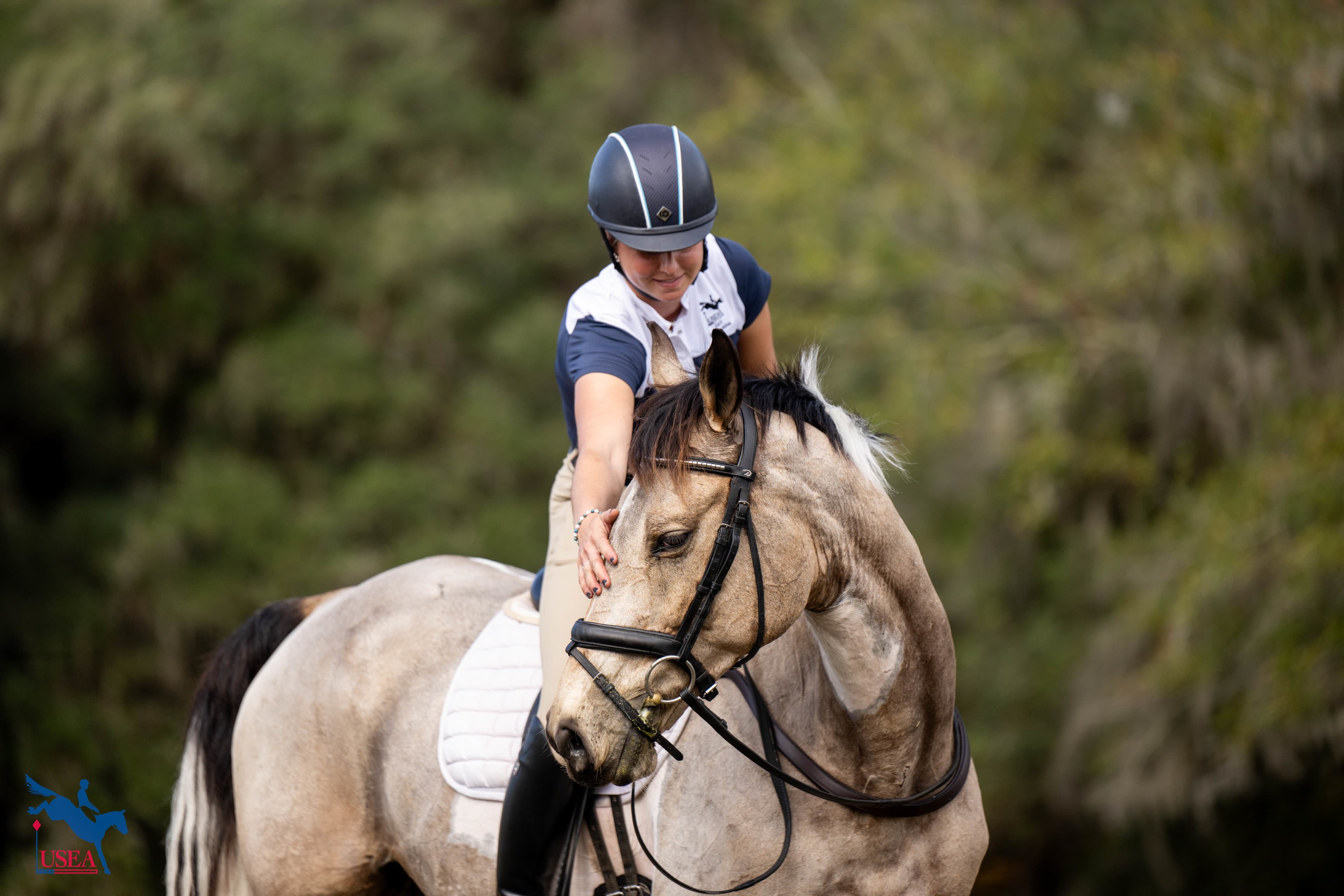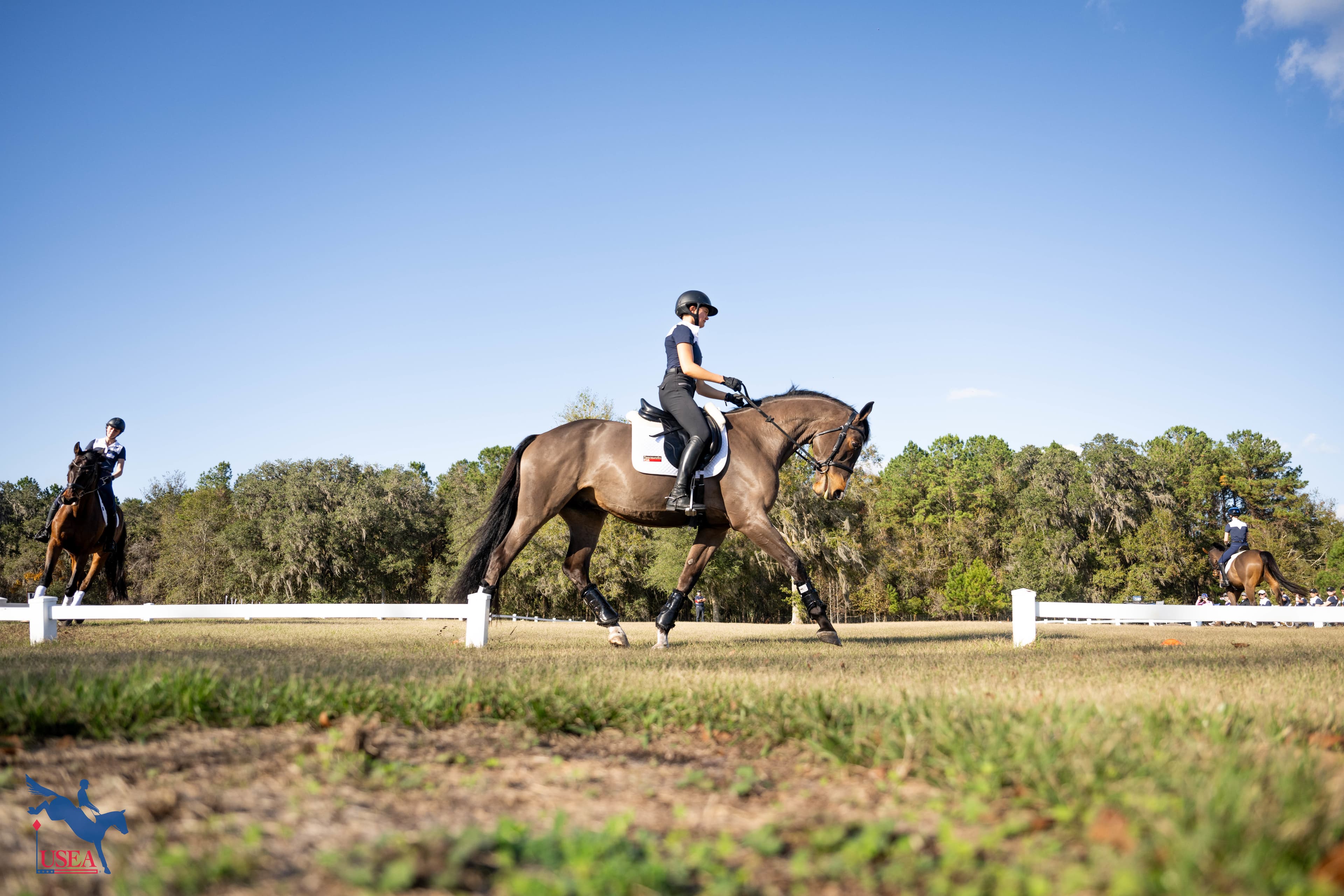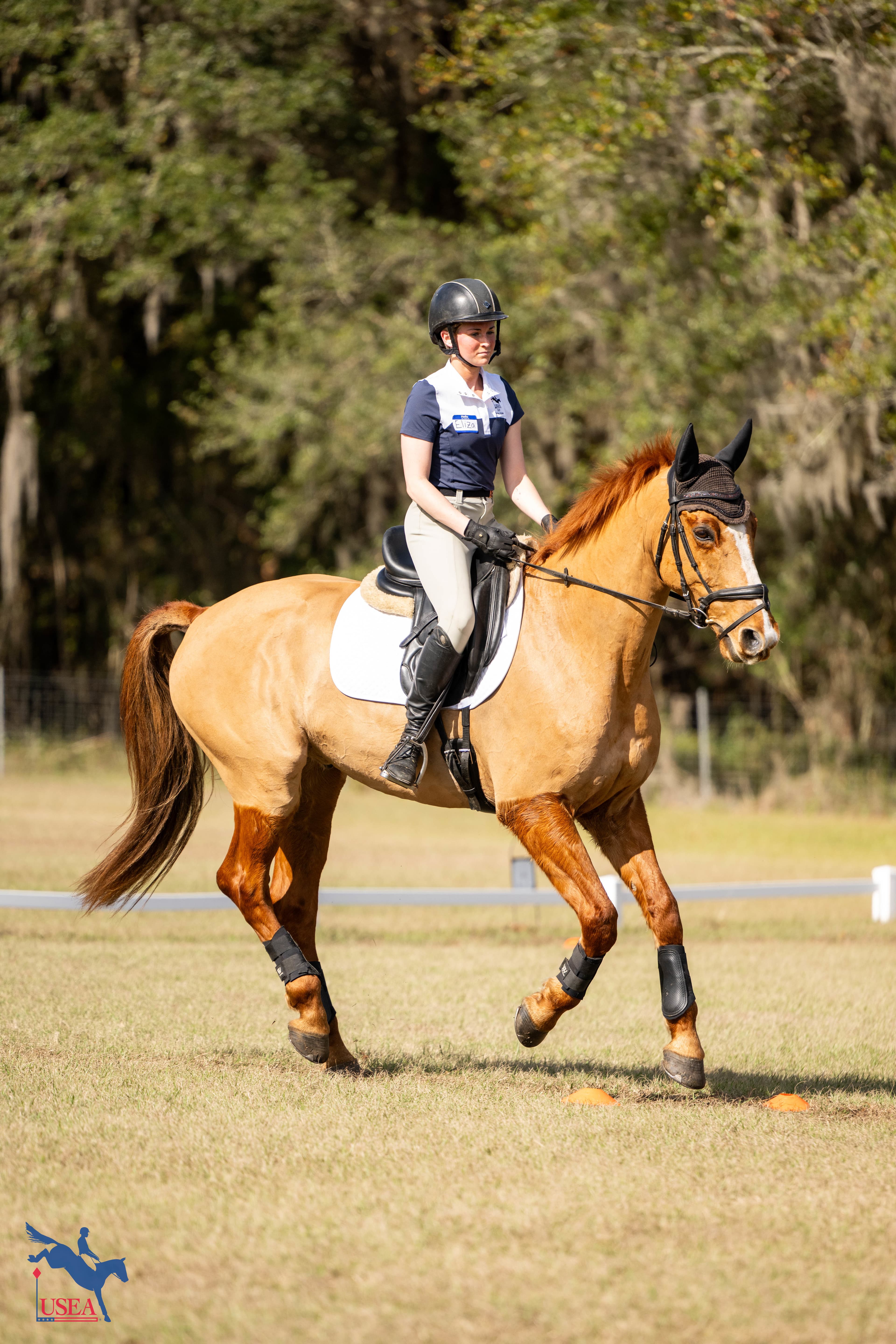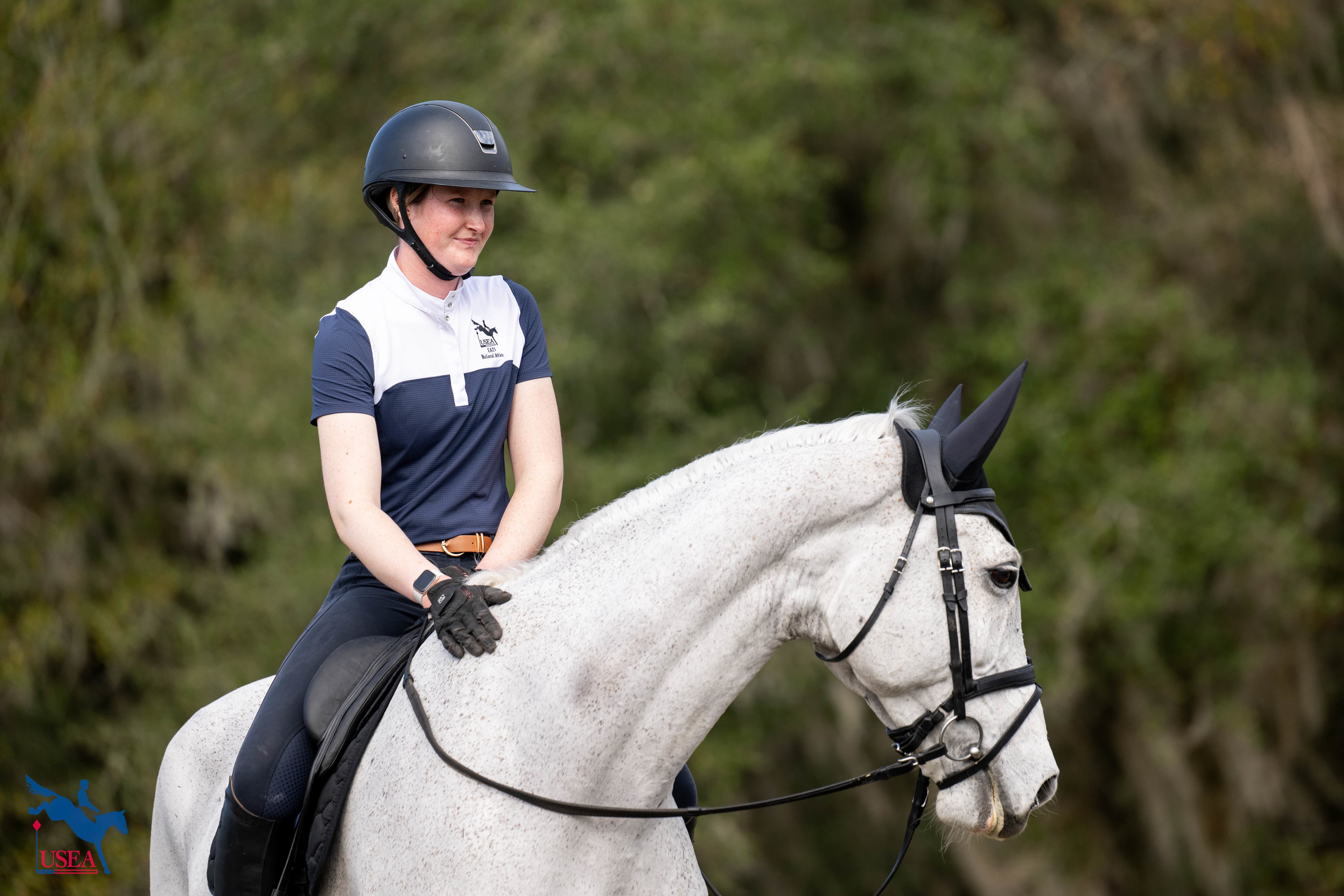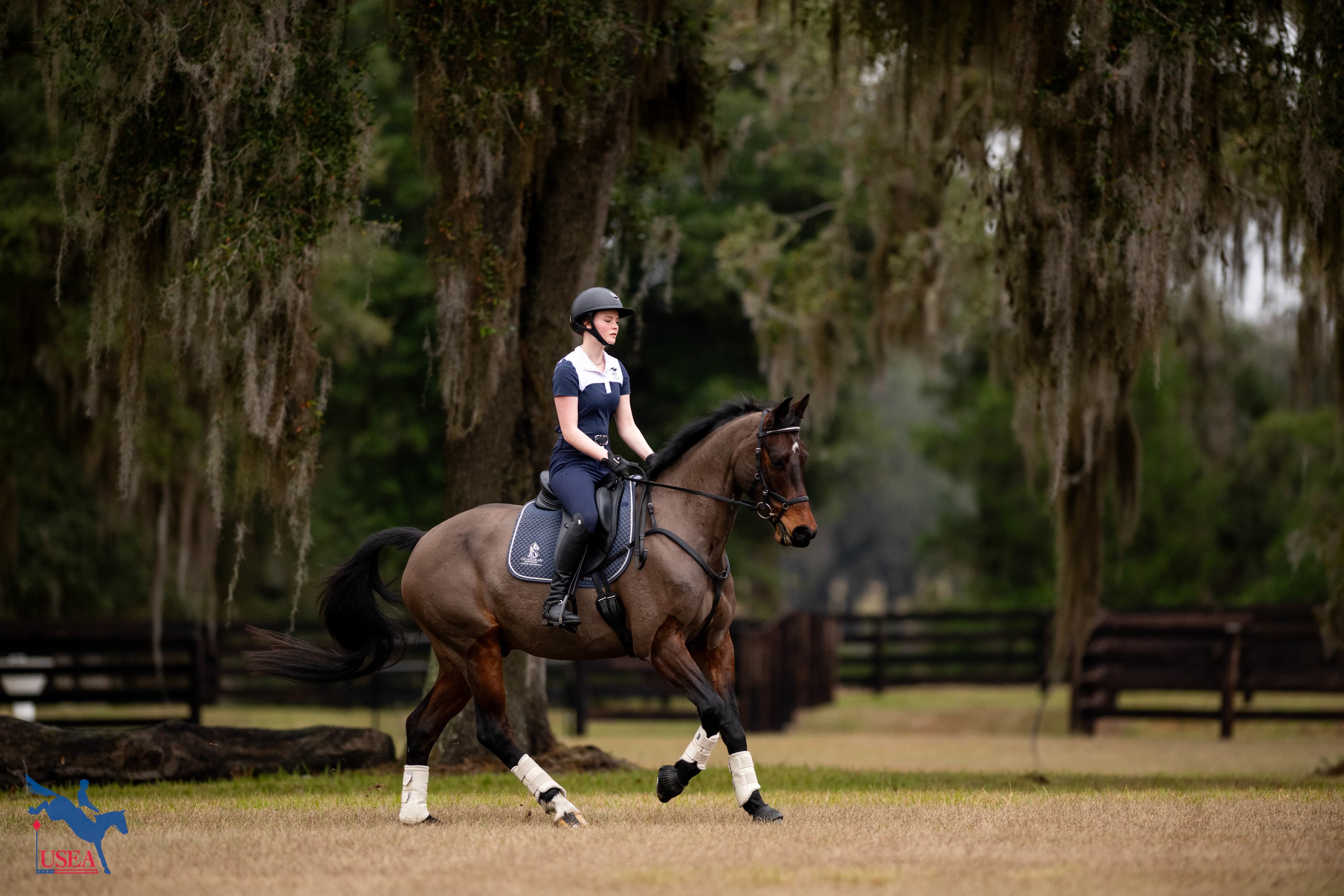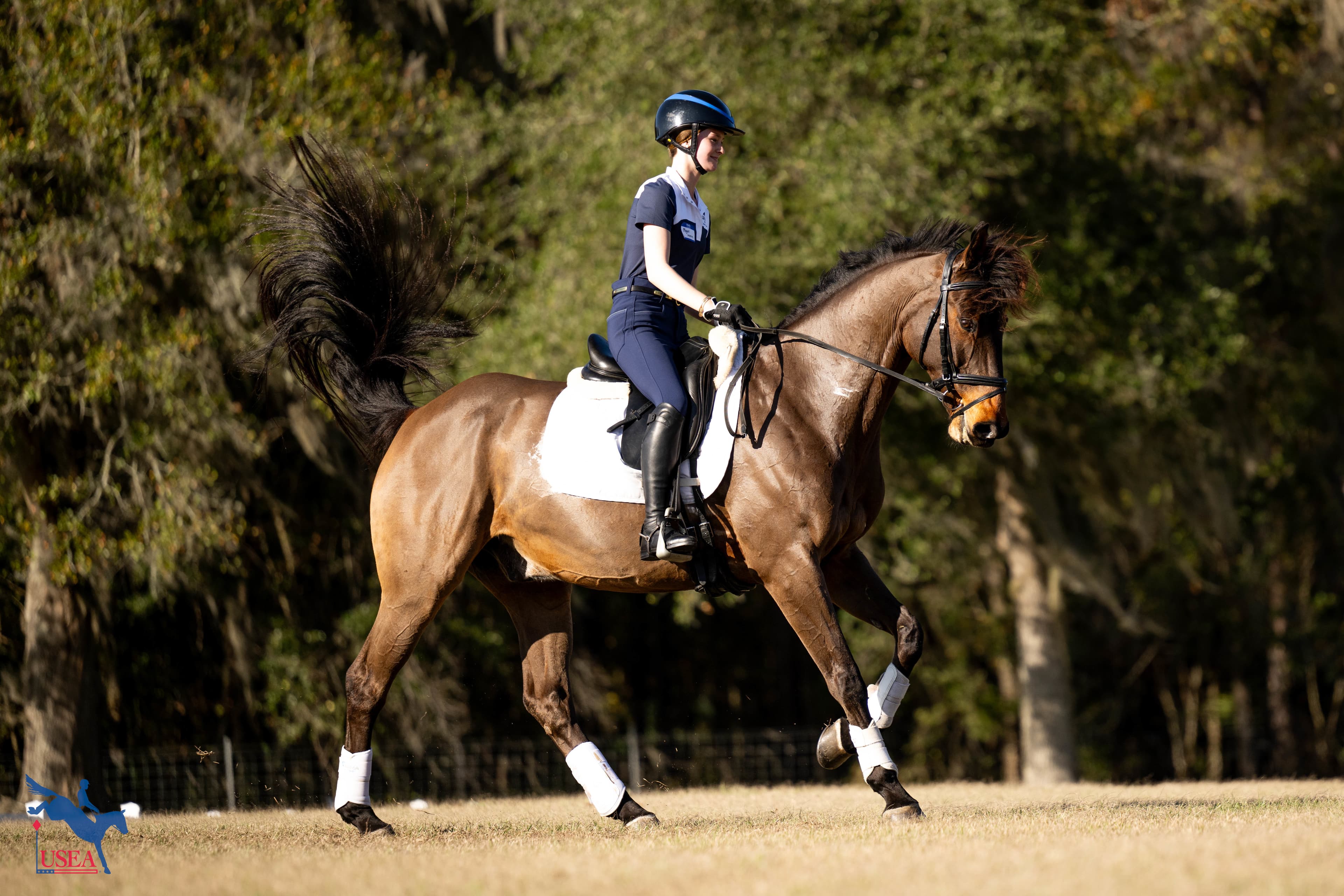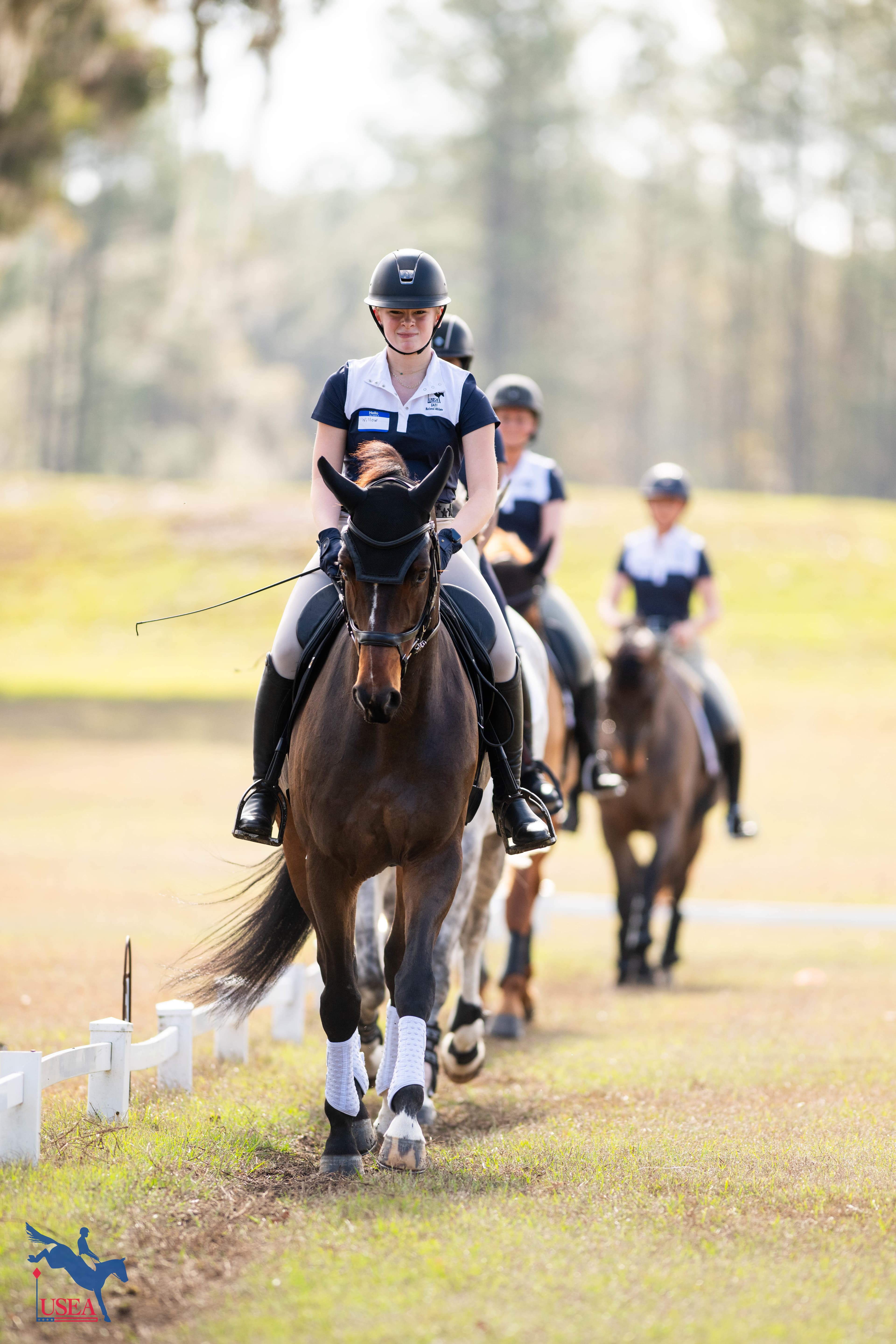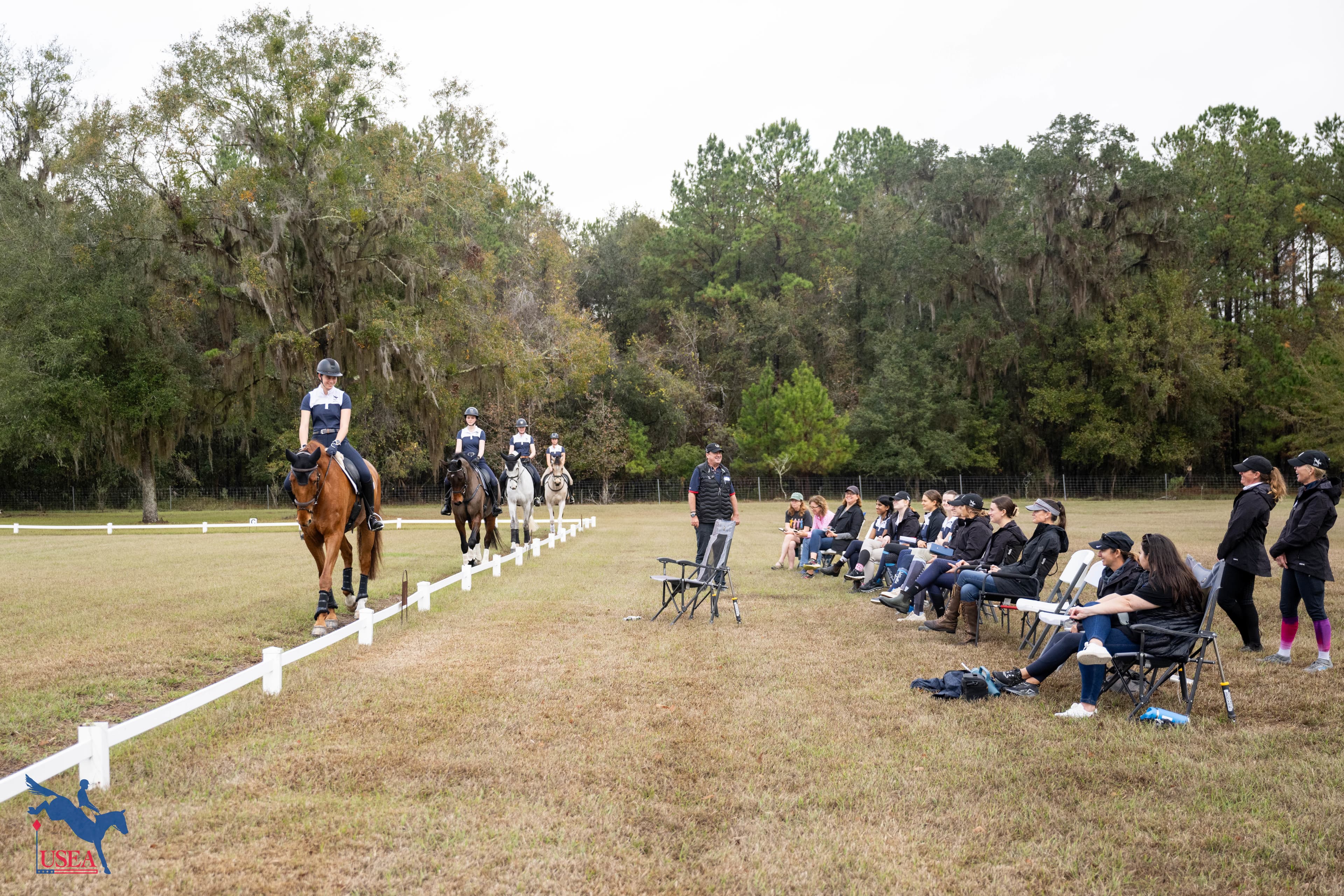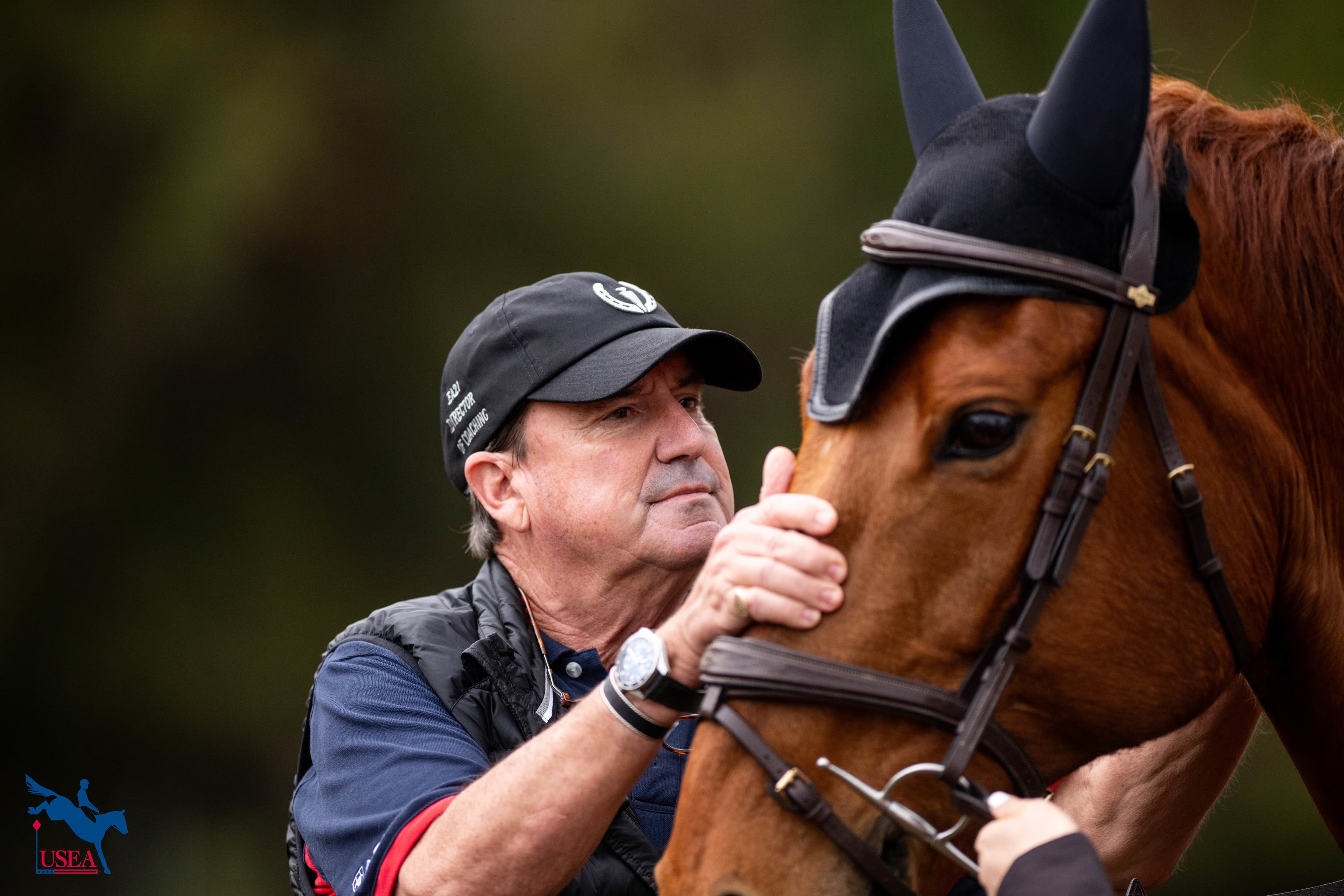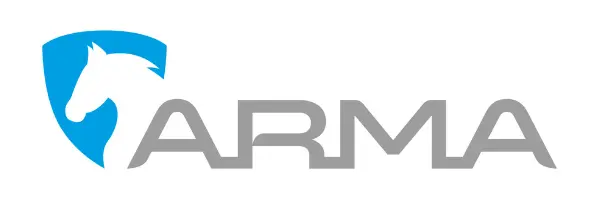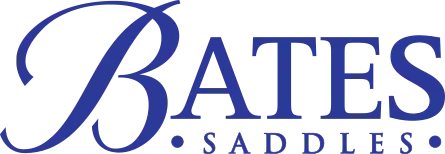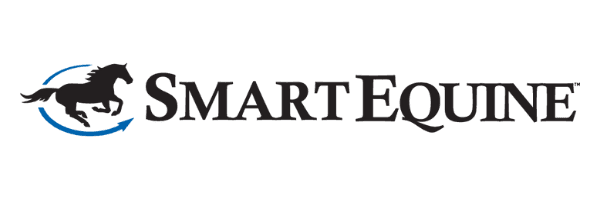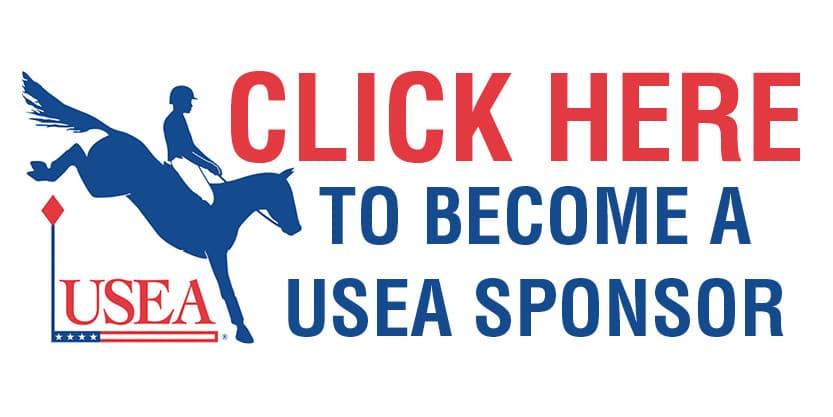Communication Reigns Supreme on First Day of 2024-2025 EA21 National Camp
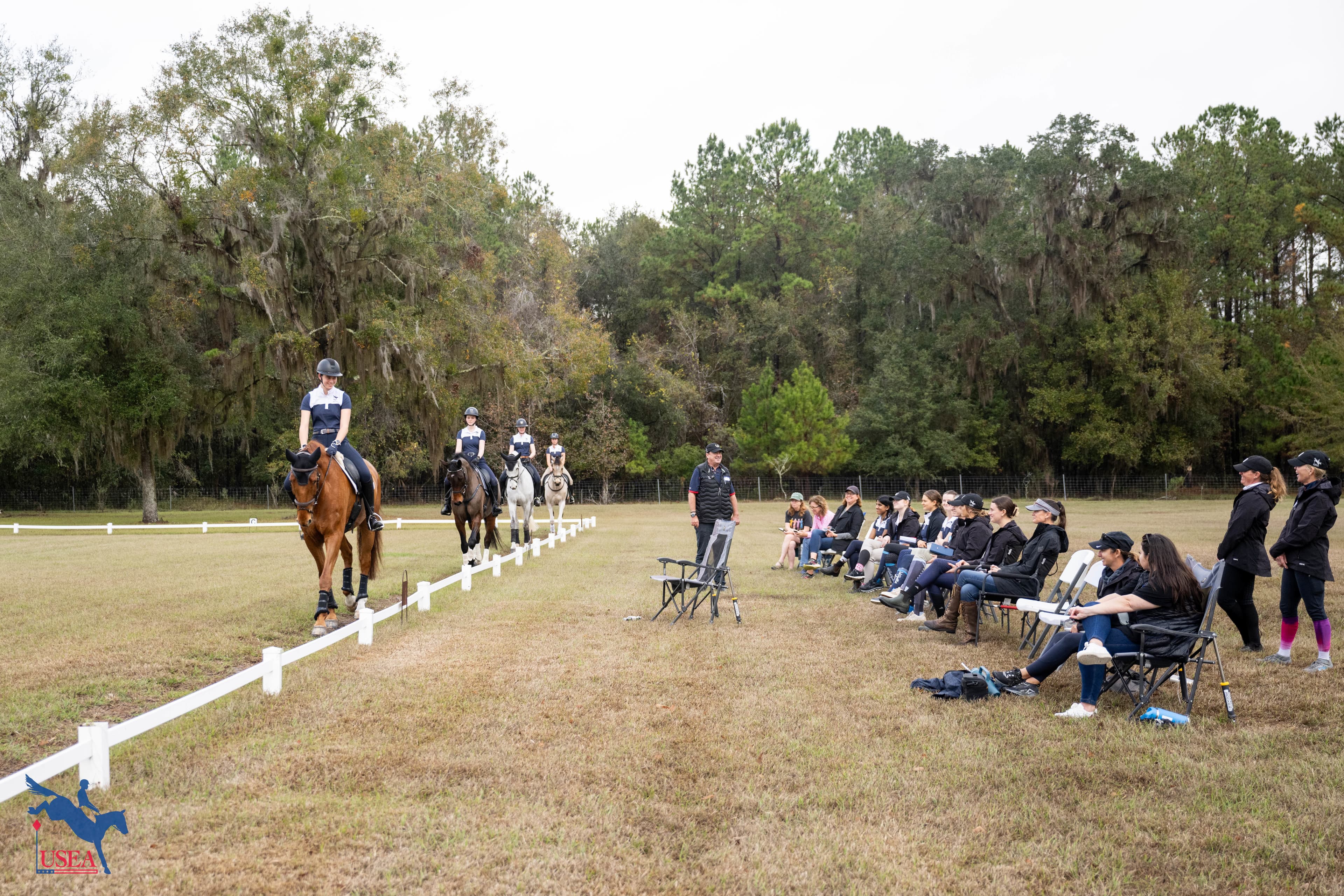
Ocala, Fla.—Dec. 31—“There’s got to be things that you believe to your core,” EA21 Director of Coaching David O’Connor began on the first day of the 2024-2025 Emerging Athletes Under 21 (EA21) National Camp held at Sweet Dixie South in Ocala, Florida. “For me, that’s communication.”
In continuing the vision of standardizing eventing education across the nation, the 12 National Camp athletes were selected from 60 talented riders who attended the summer EA21 Regional Clinics. These final athletes will spend the week immersed in classroom sessions, horsemanship lectures, and riding instruction led by O’Connor. Their first day emphasized the importance of clear and consistent communication with their equine partners.
Hands, seat, and leg make up the ways in which riders convey information to their horses; known as a rider’s aids. The leg (from the knee down) creates energy, the seat (from the knee to the ribcage) regulates tempo and stride length, and the hand receives the energy.
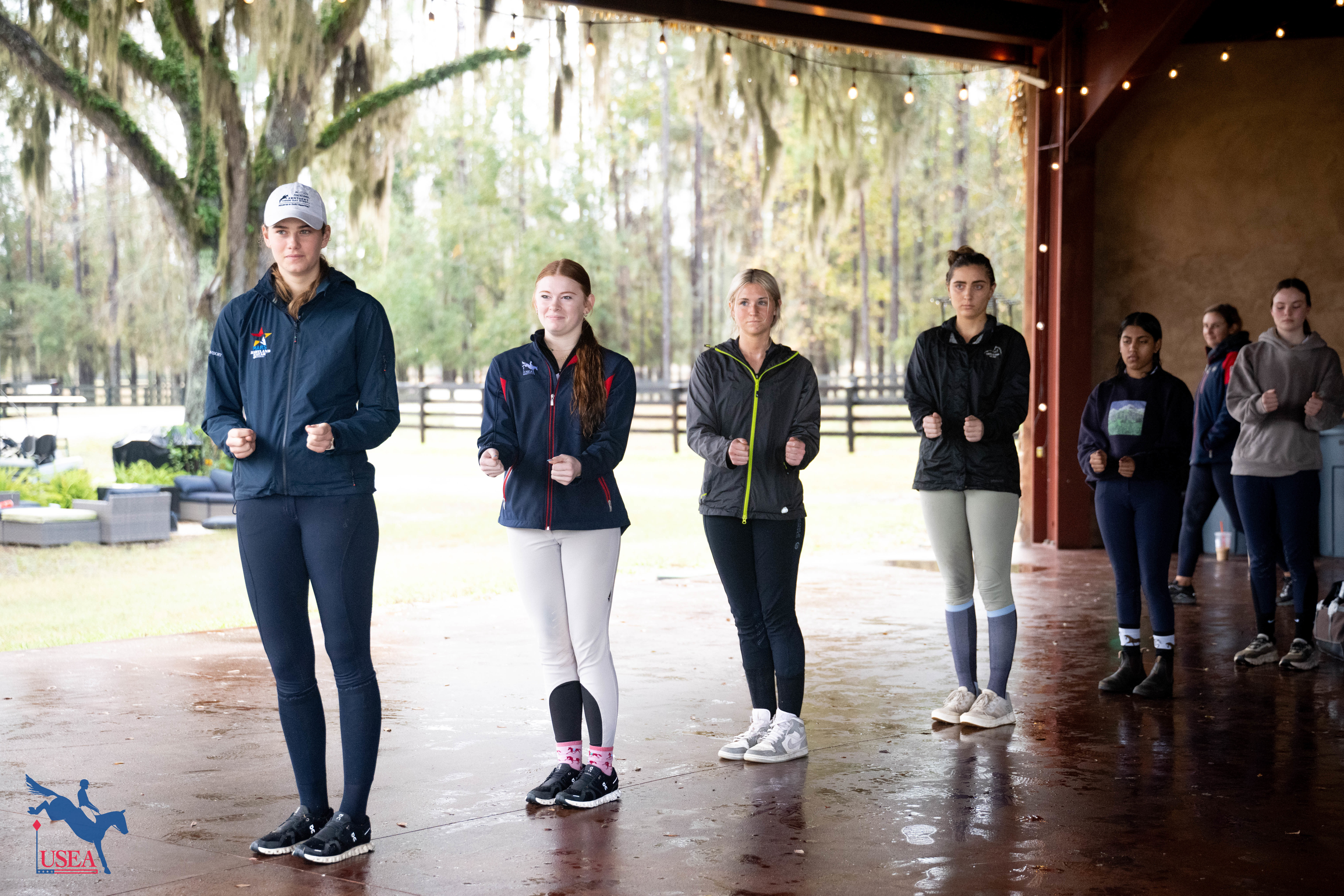
“Have I taught them what I’m saying? Do I communicate consistently every single time? You can never forget that horses don’t know what’s going on,” O’Connor explained.
From the first moment of the under saddle instruction, that is what O’Connor honed in on. Each group worked to create clarity in their communication with their rides. Most riders were able to bring their own rides, but others were catch riding horses generously provided by Sara Kozumplik, Emily Mastervich, and Joe Meyer.
“This is the 'Oh my god lesson,'” O’Connor laughed. “When you change your posting and the horse changes underneath you and you go: ‘Oh my god.’”
As in past years, using the technique of drill riding, riders were asked to stay in a line with one horse length between them and regulate their pace to maintain that distance. Instruction would be given to them as either riding in a line where each rider follows the one before them in the completion of a task or as a ride where each rider completes the task at the same time, turning all at once for example instead of one at a time. Riders grasped the concept quickly and were able to move on to the details of their basics.
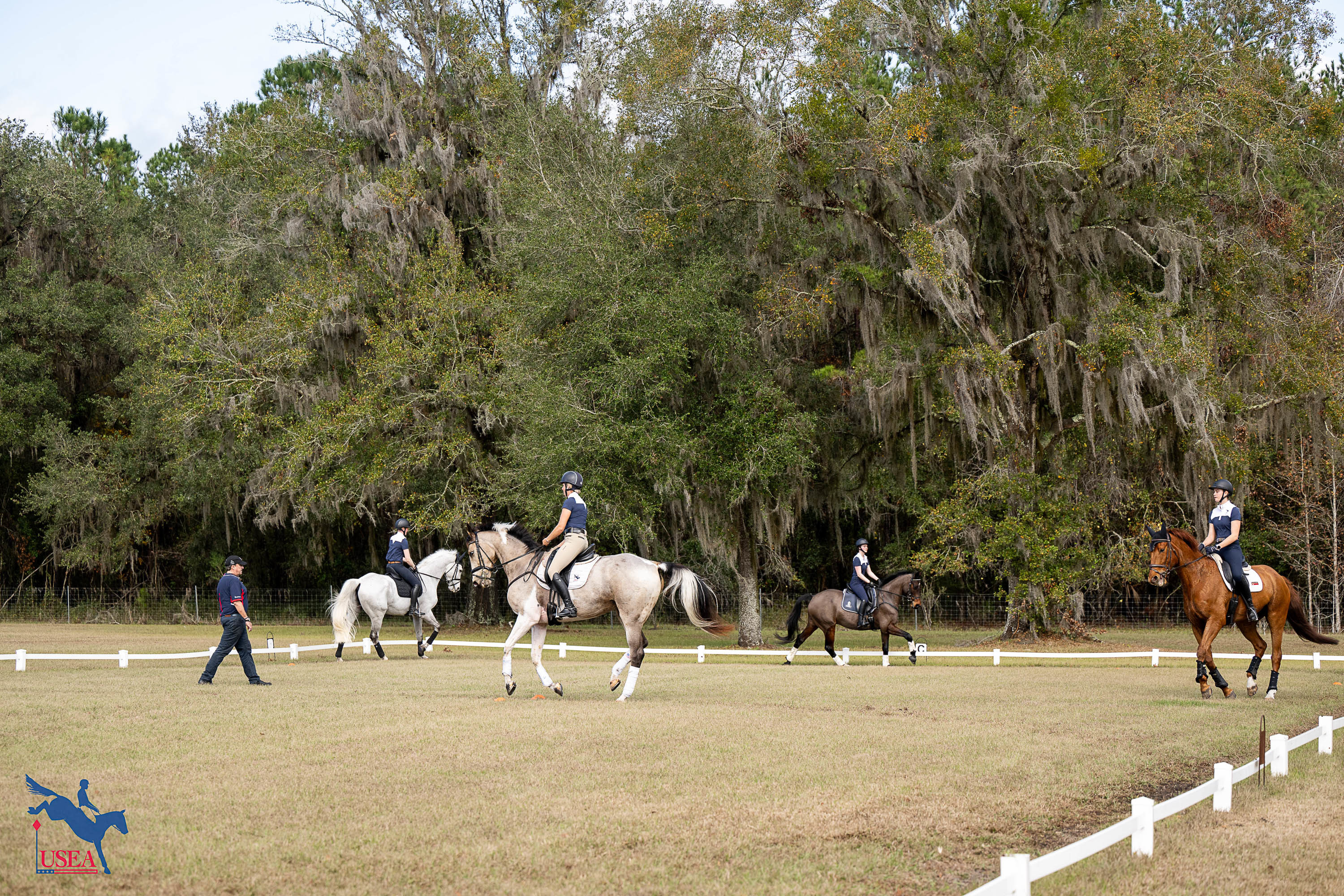
Learning the different ways the seat affects movement is a fundamental but advanced basic that will allow the athletes to be able to ride any horse. Requiring the strength and ability to move with the horse confidently, it can create precise communication and remove reliance on the hand. Using the seat to change the stride length and create suspension, a more up-and-down movement rather than only a forward movement, was an aha moment for many of the riders. Those who were watching saw dramatic changes in the smoothness of communication and consistency in the quality of step as riders were able to create new tools to use with their mounts.
For Harper Padgett, who is attending the National Camp for the third time, this year’s attendance continues to affirm the value of the basics. “[I approached this year with the idea of] instilling the basics and never letting it leave my riding, and repeating it. Just making sure it's still in my riding for my whole career, and not letting it slip away.”
Padgett catch rode a horse from Mastervich, the EA21 Coach for the East Coast II Regional Clinic held at Stable View. The value of the catch ride for her hammers home the purpose of the program: not just one horse, but every ride.
“Working on not just the horse, but my own riding throughout these camps, and see[ing] how that works on every horse that I sit on has been really cool,” she commented.
Shruti Bona, who is a EA21 National Camp first-timer, found moments of cohesion with her catch ride from Joe Meyer, but also some places for improvement.
“I was riding in a jump saddle but riding with longer stirrups in a jump saddle definitely makes me have to use my whole leg more and makes me aware of muscles that are weak," Bona noted.
Another catch ride from Sara Kozumplik in Elsa Warble’s mount meant another opportunity to put into practice all the lessons from the day. Warble is attending the National Camp for a second time and “taking everything from last year and putting it to a higher level. It's one thing to do it on a horse you really know, but then to do it on someone new, you have to figure out which tools to apply.”
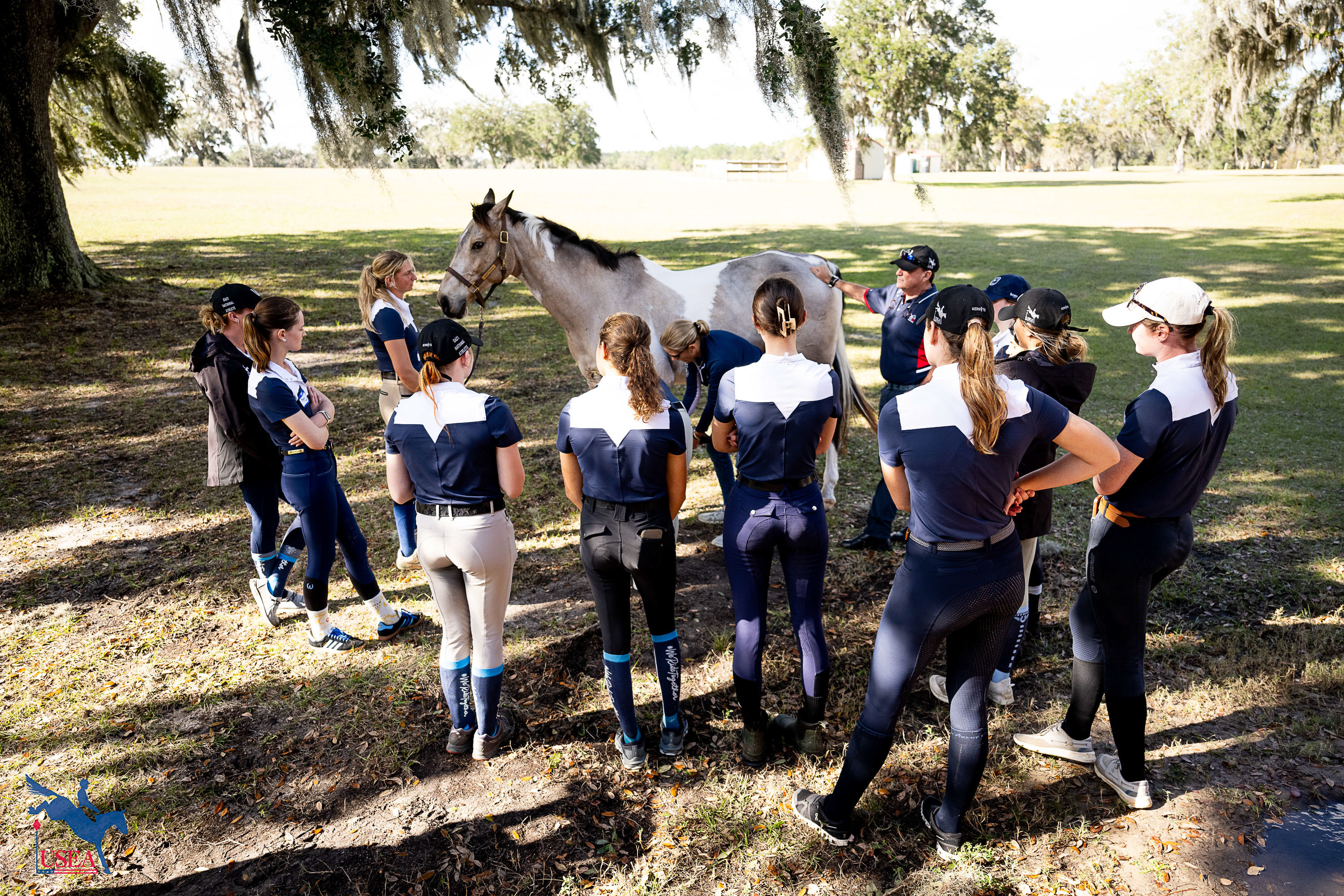
Attendees were also treated to a horsemanship lecture from the current Chair of the USEA Grooms Committee and former USEA President, Max Corcoran. From grooming advice to soft tissue injury management, Corcoran encouraged a careful approach to stable management that deals with heading off little issues before they become big problems. Intimate knowledge of individual horses and their unique quirks and attitudes leads to the source of any problem rather than just dealing with the symptoms.
Continuing a theme of the day, athletes were inquisitive and took advantage of the time with experts, frequently asking questions of Corcoran and O’Connor all day.
“Every year, you just see a little bit of a higher level coming here and through the other regional camps, you've seen that this work is not totally new to them. You feel like they're playing around with these techniques right now so the first day in, we got quite far,” O’Connor remarked. “It's much more of an education, basic theory, technique side of the equation, You'll see them be competitively better just because they're being better. [But the success of EA21 is about] commitment and staying on mission.”
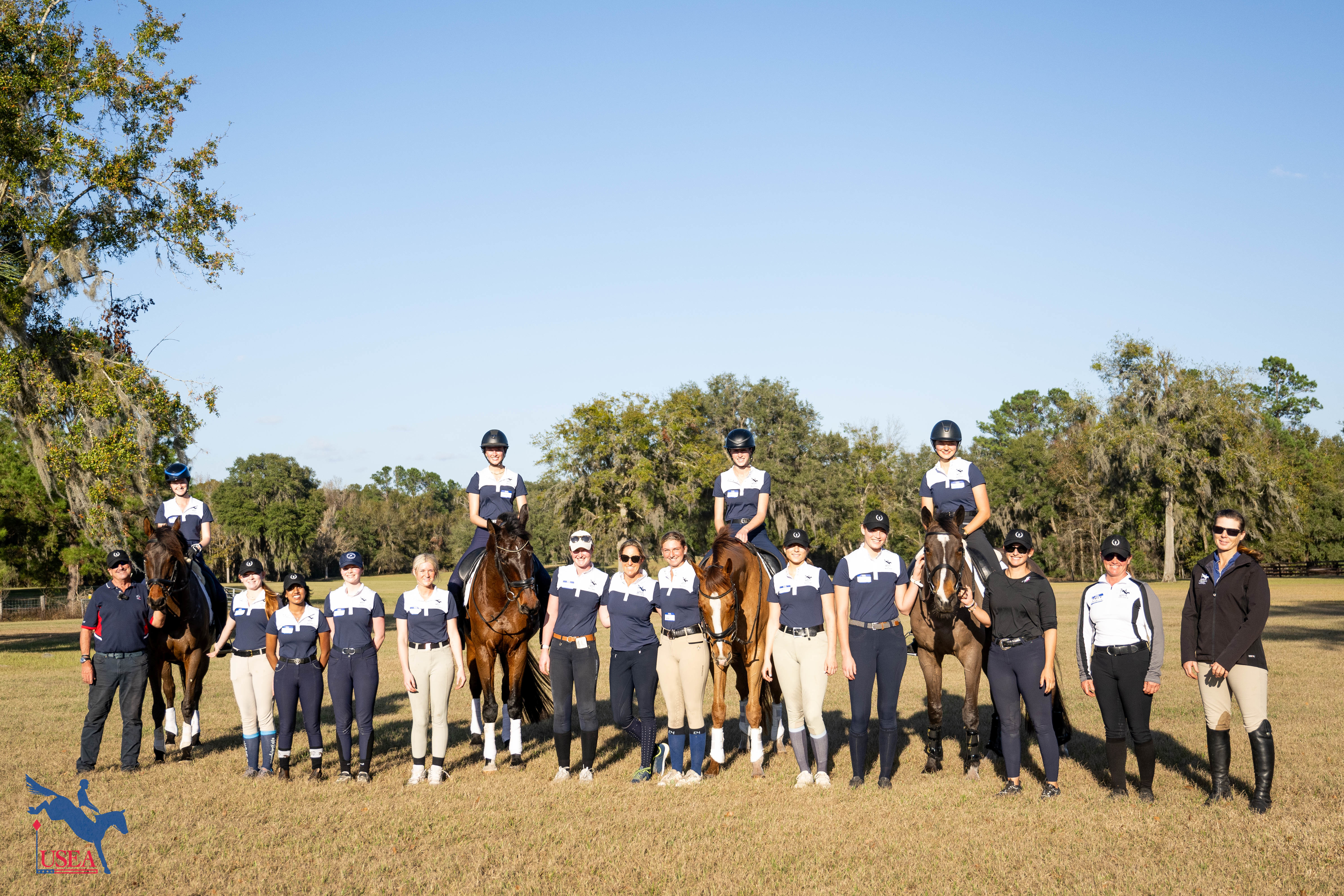
Helpful Links:
Don't forget to follow the USEA event coverage on social media!
Facebook | Instagram | Threads | TikTok
About the USEA Emerging Athlete U21 Program (EA21)
The purpose of the USEA Emerging Athletes U21 Program (EA21) is to identify and provide consistent quality instruction to the next generation of elite event riders. The aim is to create a pipeline for potential team riders by identifying and developing young talent, improving horsemanship and riding skills, and training and improving skills and consistency.
The USEA Emerging Athletes U21 Program was launched in 2022 with a model of five summertime regional clinics taught by selected USEA Eventing Coaches Program (ECP) coaches, leading to a winter national camp consisting of selected Young Riders from the regional clinics. Athletes who are 21 years or younger, are current members of their USEA Young Rider Area program, and are established at the Training Level or higher, are eligible to apply for the EA21 program. Click here to learn more about the USEA EA21 Program.
The USEA would like to thank ARMA, Bates Saddles, Kerrits, PulseVet, Ride iQ, Schneiders Saddlery, Sidelines Magazine, YETI and WeRideTogether for sponsoring the USEA Emerging Athletes U21 Program.
